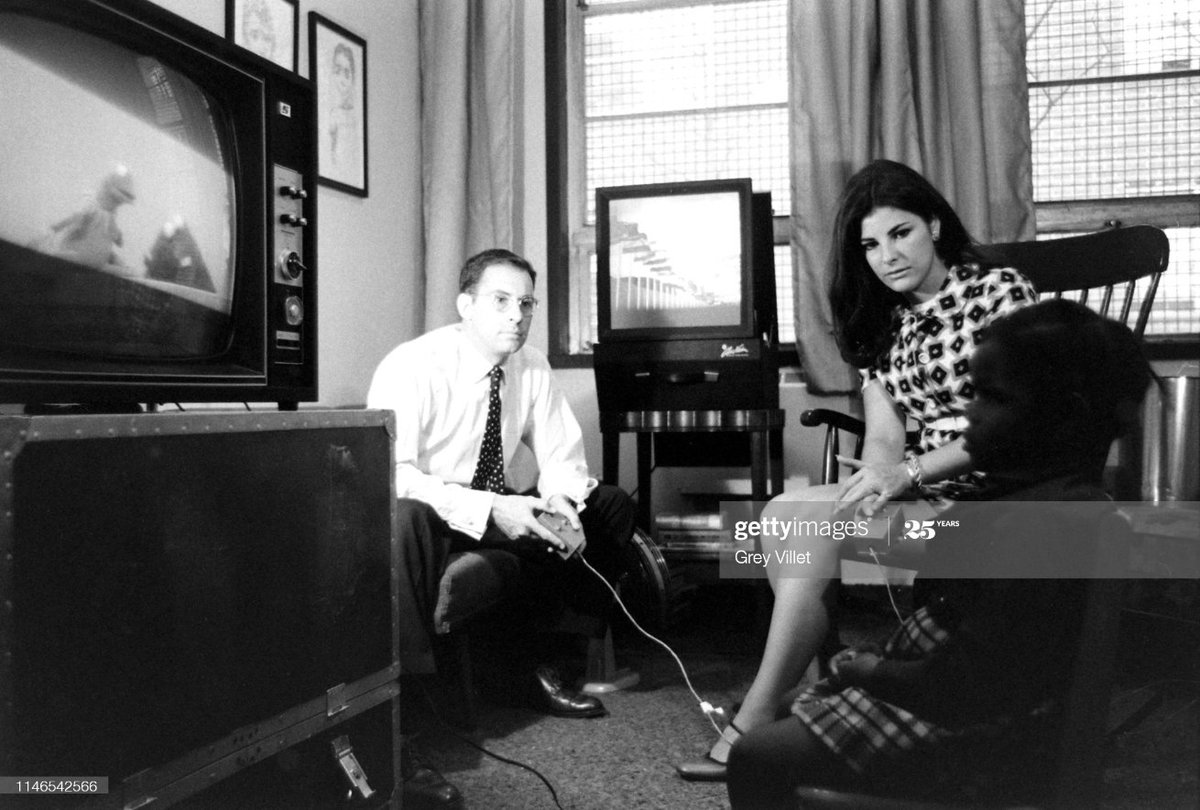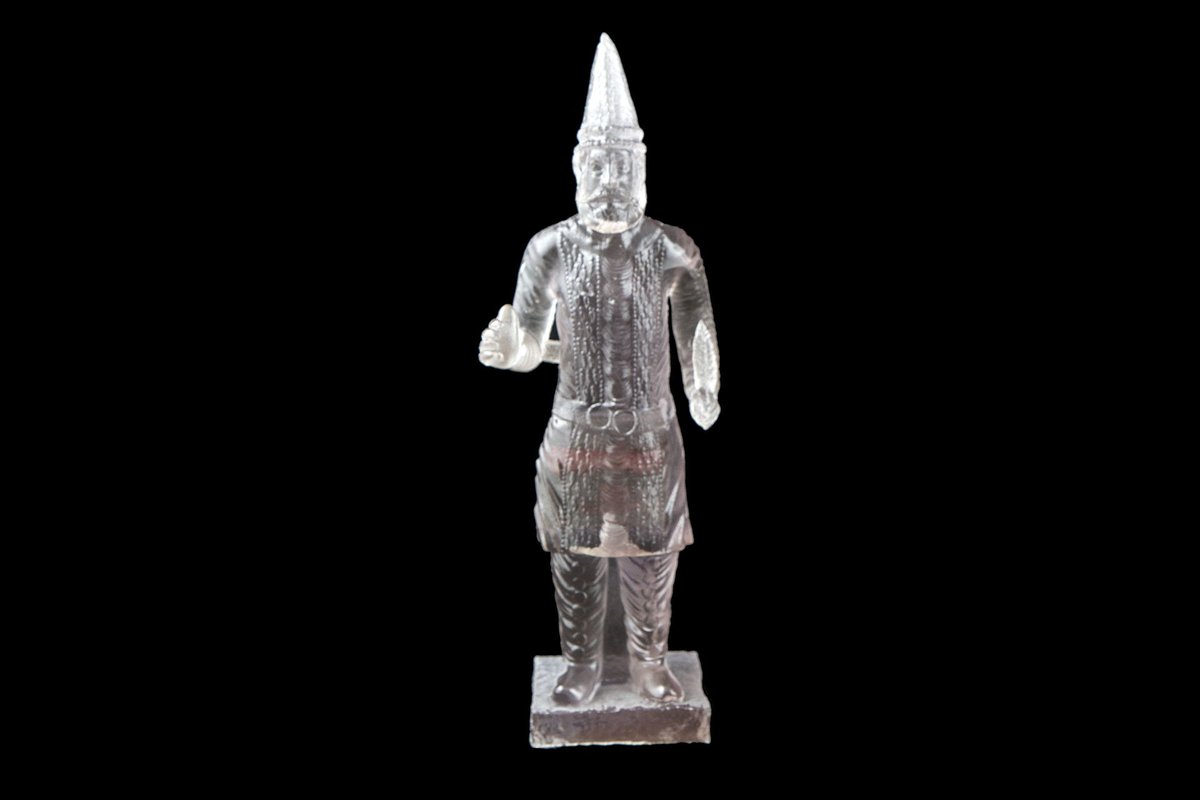This is a picture of a research session by the Children's Television Workshop in 1969, as they worked on an episode of Sesame Street. They used to show every episode to kids before broadcast, to make sure they were doing it right. That screen in the corner? That's The Distractor. 

In 1965, the Carnegie Corporation commissioned a report that noted that “nearly half the nation’s school districts do not now have kindergartens,” but “more households have televisions than bathtubs, telephones, vacuum cleaners, toasters, or a regular daily newspaper.”
If we can harness television as an educational tool, they realised, we can have a real effect on kids' lives and prospects. So they funded the Children’s Television Workshop, which came to create Sesame Street. 

One of the first researchers the CTW employed was a psychologist from Harvard, Edward L. Palmer - pictured left, with CTW Executive Director and producer, Joan Ganz Cooney (author of the Carnegie report), and Executive Producer, David Connell. 

To test whether Sesame Street was really getting and keeping kids' attention, Palmer invented The Distractor, a slide show of hundreds of random images which would be shown next to a TV playing new episodes of the show.
A team of researchers watched the kids watching TV, and noted how much time they were paying attention to the show, and how much they were being distracted. Only when a show got more than 85% attention would it air; most averaged more than 90%. 

The purpose of all this, remember, was education. Sesame Street's aim, memorably described by the New Yorker’s film critic Renata Adler in 1972, was “to sell, by means of television, the rational, the humane, and the linear to little children.”
Since Sesame Street, we've seen children's TV evolve in all kinds of ways. My personal favourite, and one which bears interesting comparison to the state of media today, is the Teletubbies. 

Teletubbies was widely decried on its launch for "dumbing down" - they spoke in baby talk, bumped around aimlessly, and repeated sections of the show ad nauseam. The press hated it, critics opined endlessly, but toddlers - and stoners - loved it. 

In fact, the show was carefully thought out, and designed to appeal to its target audience. "Nonsense language" aids in infant language acquisition, repetition gives a sense of calm, and enhances learning, and toddlers feel kinship & compassion to the waddling Teletubbies.
Fast forward another couple of decades, and where is children's television, as well as adult media today? What's happened to all that research into attention, and how is it being used?
It's in the hands of internet companies, which have stripped it of all its educational content, and weaponised its efficiencies for getting and holding human attention. Notable amongst these is Google's YouTube.
When I wrote about the horrors of YouTube's kids content a while back, with particular attention to its mind-numbing repetitiveness and meaninglessness alongside it's violence and sexual content, many responded that it was only as bad as Teletubbies... medium.com/@jamesbridle/s…
Well, it's far worse than that. YouTube isn't just benightmaring kids, its radicalising adults, as we all know by now, and this sense is confirmed by extensive research. nytimes.com/interactive/20…
YouTube has become The Great Distractor. Along with other 'persuasive media' (a term coined by BJ Fogg, who taught the founders of Instagram and others how to capture attention most effectively), it's come to dominate childrens' and adults' media by hacking our brains.
The results are everything you see around us: the triumph of the irrational, the inhumane, and the non-linear, for the benefit of a few wealthy individuals and corporations.
All of which is to say, I've written a new essay about Sesame Street, Teletubbies, YouTube and The Distractor for The Centre for Media, Technology and Democracy @mediatechdem, a new project by the
@MaxBellSchool at @mcgillu. You can read it here: mediatechdemocracy.com/work/the-great…
@MaxBellSchool at @mcgillu. You can read it here: mediatechdemocracy.com/work/the-great…
Oh, a bonus! Here's CTW's original pitch reel, shown to TV executives to persuade them to show the first series of Sesame Street. It includes Kermit coming up with the show's name - and it's an absolute delight
• • •
Missing some Tweet in this thread? You can try to
force a refresh




